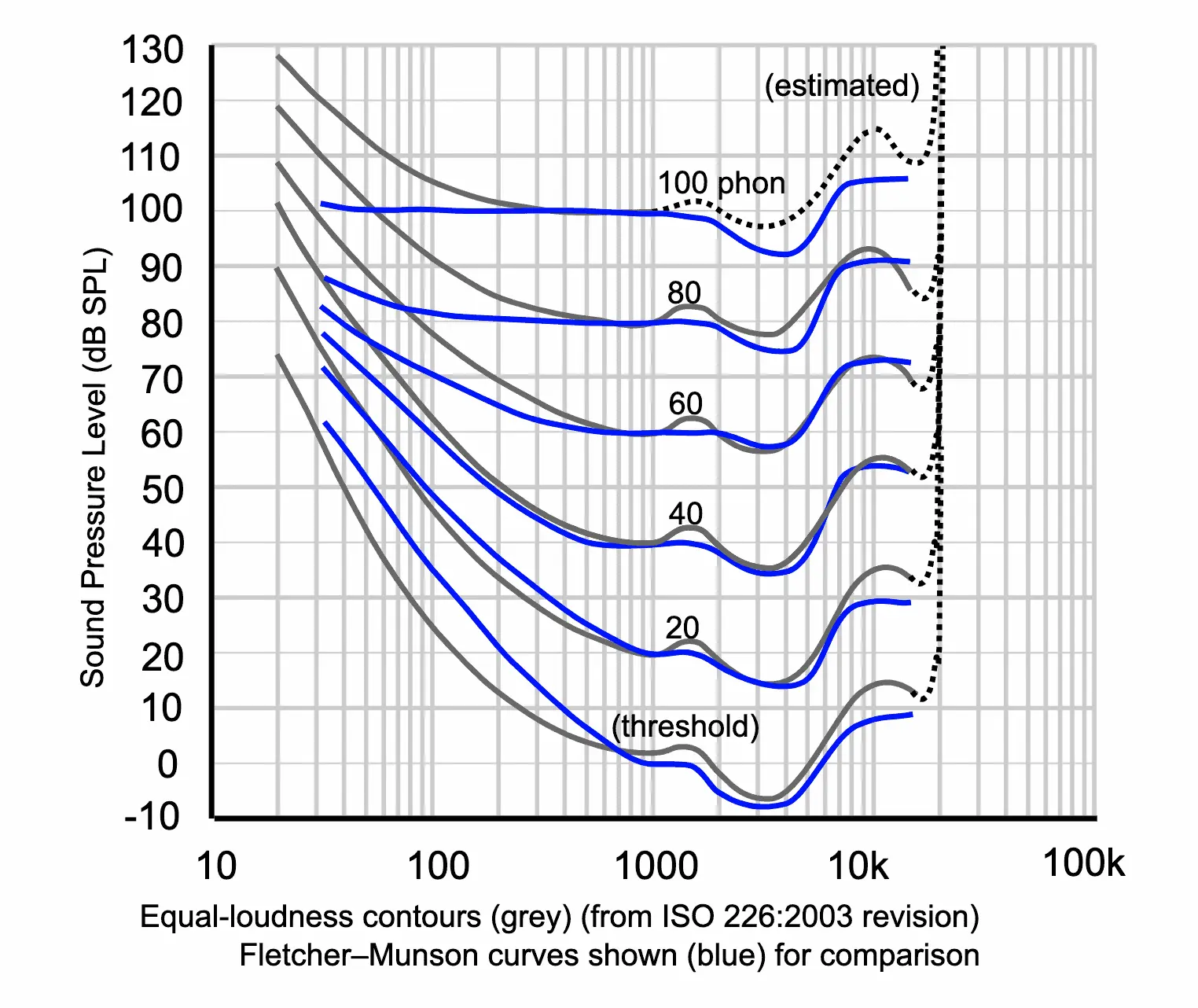Because the ear is more sensitive to lower frequencies at higher sound pressure levels, the low-frequency lines flatten out. Take note of how the ear becomes less sensitive to frequencies above 6,000 Hz. This is because your ear is generally attuned to the ranges of human speech, (and animal noises) as that’s what it mainly evolved to hear.
The Fletcher Munson Curves explain why quieter music appears duller, and less pronounced than louder music.
The louder the music, the more we perceive the lower frequencies, making it more full and rich. Many stereo systems include a loudness control that boosts the sound’s low and high frequencies.
Take Away
- The Fletcher-Munson Curve shows the difference in loudness thresholds involved in pitch perception
- Lower frequencies, generally, require higher volumes to be heard
- Mid-range frequencies are the easiest to pick-up
- Higher range freqeuncies are slightly less pronounced than the mid range
Mixing (Physics Student’s Can Now Leave)
So if you mix music, you have probably picked up on the problem the Fletcher-Munson curve creates. If you listen to a song/project quitely, and then listen to it at MAX volume you are going to go crazy trying to EQ it, because it sounds different at both levels!
No you are not crazy… this is the Fletcher-Munson Curve in action. So to mix to the best of your abilities you are going to want to do any of your volume control/EQ/ anything that relies on you detecting the loudness of a sound, at the same level. So go write down that level and keep it as the benchmark to test when you come back after a days rest.
You may wonder: Why do I tend to have that benchmark at a loud volume, as suggested earlier in the article? Because people pay attention to music when it is at it’s loudest.
Do you pay attention more to music when its loud or when it’s quite?
Do you pay attention to music more at a concert, or when someones ringtone goes off?
When you demo music, do you play it back softly, or loud?
Human’s like loud things, and so we sometimes equate louder as better, hence the loudness wars. So when someone wants to listen and pay attention to your song, it is at a louder volume. And that is why you should be mixing at a louder volume!
Conclusion
I hope you learned something about the Fletcher Munson curve! What it is, and what to do about while mixing. Thank you for reading, and good luck mixing!
